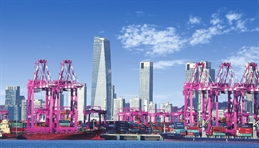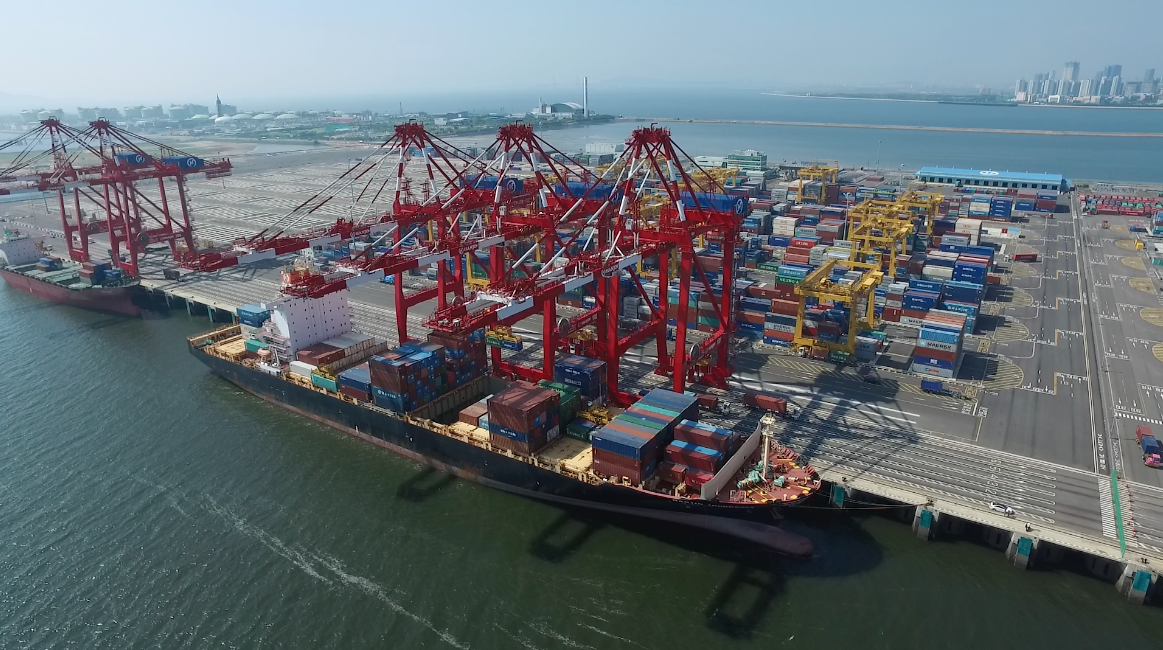
Incheon Port posted a new throughput record in 2016 of 2.68 million TEUs, but that is only the first step in a longer-term development plan that the port authority hopes will result in a total throughput of 3 million TEUs for 2017, as well as 3.5 million by 2020.
“With the Hanjin bankruptcy and the economic downturn in South Korea, it was actually quite tough for us to achieve a high volume, but we improved our infrastructure at Incheon New Port and the capacity expansion really helped us,” says Bong-Hyun Nam, president of Incheon Port Authority. “For example, we’ve just completed our dredging and we now have a water depth of 16 metres, and we’re now able to handle 16,000 TEU vessels.”
According to Nam, the port has also been improving its customer service and communication by listening to the feedback from its users, and is now able to provide a 24-hour operation, bringing it up to the same level as other global ports.
Incheon began rolling out the first phase of its New Port in 2015, consisting of a 1.6-kilometre-long berth split between the Sunkwang New Container Terminal and the Hanjin Incheon Container Terminal. According to the port, the second half of SNCT started operations in March 2017, while HJIT is scheduled to open its second half in November 2017, completing phase one by the end of the year with a capacity of 1.2 million TEUs at each terminal.
“Phase two is being planned, but that will need to be finalized based on the volume growth,” says Nam. “It will probably be in 2024-2025. We’re also thinking about a possible third phase.”
At the moment, the split in containers handled between Incheon New Port and the older South Port is about 50:50. The plan is for Incheon New Port to gradually take the lead and become the main container-handling area.
“After the relocation of container traffic, we’ll try to transform the South Port into an automotive logistics cluster,” Nam says. “Car exports are currently using the Inner Port, inside the lock gates. As car carriers become bigger and bigger, they won’t be able to fit.”
For Nam, who was appointed president of the port authority in February 2017, there are two main goals to achieve: to make Incheon Port a logistics hub for the Yellow Sea region as well as for Asia more generally, and to develop the maritime tourism business.

“We’re continuing to develop the intra-Asia part of our business,” he says. “On the intra-Asia trade, which has traditionally been our strength, the free trade agreement between South Korea and Vietnam has helped us to be more successful. For example, we now have an annual growth of 20-30% in that trade. We’re also trying to diversify our long-haul routes by offering cash incentives.”
Hyundai Merchant Marine’s Pacific South 1 service is currently Incheon Port’s only one long-haul service, connecting China and South Korea with the US West Coast, but Nam says that the port is aiming to launch a second long-haul service within this year.
“The market situation is a bit challenging at the moment, but we’ll try our best,” he says. “I was actually just in the US to promote Incheon Port as a feasible destination. We’re focusing on high-value products such as fresh meat and frozen food. These require reefer containers and the handling fees are three to four times higher than for dry cargo.”
In preparation for that, the port is planning to construct special warehouses for frozen cargo in the New Port area, near an existing liquefied natural gas terminal.
“Some of the cooling energy they use is wasted and we’ll be able to use that for our warehouses,” says Nam. “The planning for that is already done and now we’re talking to the potential operators to select the right one. We think we’ll complete everything by 2021.”
The impeachment of Geun-Hye Park in March 2017 and the election of Jae-In Moon as the new president of South Korea in May 2017 signal a new direction for Incheon Port.
“President Moon was actually born near Busan and has a high level of understanding of the maritime and port business,” says. “He has promised reforms, so we expect that he will raise our country’s marine industry to the next level.”
To compete against and work with its strong neighbours, Nam says that the new government has already sent representatives to China, Russia, Japan and the US for private talks on trade, among other things, which bodes well for the shipping industry.
“The economy is improving with export orders going up and the new government is moving forward, which is encouraging,” says. “Based on that, Incheon Port is also moving forward faster and we will try to take advantage of those positive aspects as much as we can.”
By Jeffrey Lee
Asia Cargo News | Hong Kong



